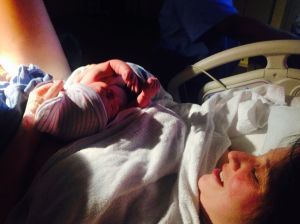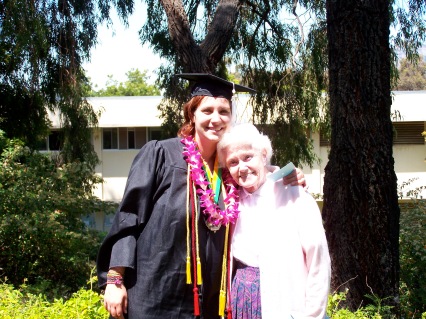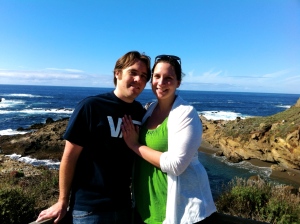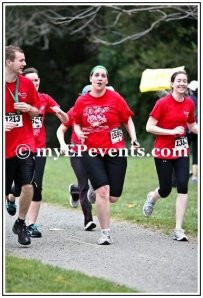Here’s a draft of my CCCC 2016 talk.
I want to begin with a problem, then tell a story, and then propose a potential step toward a solution.
Here’s the problem: as recent stories in the New York Times, Alternet, and the Washington Post show, colleges are admitting more disabled students and students of color than previous decades. [1] However, those articles also reveal that while more marginalized students are entering college, few are graduating. In a 2014 article titled “Why Are Huge Numbers of Disabled Students Dropping Out of College?,” s.e. smith reports that “today, an estimated 60% of disabled young adults make it to college after high school, yet nearly two thirds are unable to complete their degrees within six years.” A 2014 analysis by the statistical publication Five Thirty Eight reminds us that race and class are also factors in retention and graduation rates: “But the fact that racial minorities have lower graduation rates than low-income students suggests that, at a minimum, income can’t fully explain the racial gap in graduation.”
While increasing and steady numbers of students of color and students with disabilities are being “allowed” into institutions of higher education, these institutions aren’t rethinking their approach to architecture, student support, and inclusion for students. Problematically, stakeholders are discussing these access issues as separate problems: in other words, the race and disability factors in graduation rates are seen as separate problems rather than intersecting. So, what would composition studies’ advocacy look like if we tackled access issues as not related to race or disability, but in fact, as overlapping biases that require an intersectional activist approach? To imagine that conversation, I offer embodied solidarity as a potential model for composition studies’ advocacy for accessible futures for all of our students. To explain what I mean by embodied solidarity, I first illustrate the concept by looking to the histories of racial justice and disability rights coalition building and then offer a definition.
In April of 1977, hundreds of disability activists entered ten federal buildings across the country to demand that the Carter administration—specifically, the Health, Education, and Welfare (HEW) agency—to sign regulations and enforce Section 504, landmark federal legislation that prohibited federal agencies from discriminating against people with disabilities; Section 504 was passed four years prior. While protestors were starved out or removed from nine of ten buildings, over a hundred protestors—mostly disabled people and caretakers—occupied the HEW building in San Francisco for twenty-four days, until the regulations were indeed signed.
An important key to the success of the 504 sit-ins was the support and involvement of both disabled and nondisabled people of color. The Black Panthers covered the protest extensively in their newspaper and made and served one hot meal every single day to the occupiers and protestors at the San Francisco HEW building. White disabled protestor Corbett O’Toole reminisces, “By far the most critical gift given us by our allies was the Black Panthers’ commitment to feed each protester in the building one hot meal every day” (qtd. in Schweik). As rhetorician Shannon Walters writes, “they [protestors and allies] took care of each other’s bodies physically, emotionally, and substantially, living in relation to each other,” and these acts of care and interdependence were key to forming identifications among disabled protestors and nondisabled allies (68).
Additionally, many of the disabled protestors themselves were people of color who centered a race analysis in their disability activist ethos. At the sit-in, protestors of color described their experiences of racism and ableism on a panel titled Minority Disabilities Panel. On that panel, Margaret Irvine described how minority disabled people are the “poorest” and “lowest” in society (qtd. In D’Lil). Joan Johnston, a black mother of a black disabled child, testified that “I am now fighting for our civil rights for the second time in my life” (qtd. In D’Lil). These testimonies modeled an intersectional approach to access: rather than seeing race and disability as completely separate or completely the same, Irvine and Johnston detailed how racism and ableism overlap in complex ways to create additional and different obstacles for disabled people of color.
Susan Schweik frames the Black Power of the 504 sit-ins[2] as a model of fluidity and embodiment in political solidarity, writing that “bodies and body politics are not clearly demarcated entities in the world but instead are ‘wounded, stumped identities, open, bewildered, and political.’” Furthermore, Walter’s concept of rhetorical touch also highlights the role of the body in identification between rhetors and audiences. She describes rhetorical touch as “a potential for identification among bodies of diverse abilities that takes place in physical, proximal, and/or emotional contact.” In my definition of embodied solidarity, I echo Schweik and Walters’s emphasis of the body in political organizing and rhetorical production. Put simply, embodied solidarity, then, is an activist method of rhetorical invention and delivery that moves bodies to perform care to and advocate for different bodies, just like the Black Panthers did for the 504 protestors. Furthermore, embodied solidarity asks activists to reflect on how our bodies are at once open, separate, and enmeshed. In this way, embodied solidarity is inherently intersectional, in both its invention and delivery: it pushes us to consider how overlapping oppressions impact different bodies, and then asks us to perform care and advocacy for bodies that are both similar and different from our own.
So what would happen if composition studies applied the same model of embodied solidarity practiced in the 504 sit-ins to the modern day inaccessibility and hostility toward disabled students and students of color at the university? For the rest of my talk, I focus on how two distinct trends within composition studies both invested in embracing non-typical language use in the classroom, language diversity and disability rhetoric, can practice embodied solidarity and move the writing classroom closer to an accessible and inclusive future.
For scholars such as Geneva Smitherman, Vershawn Young, and Victor Villanueva, embracing language diversity in the classroom is a major step writing teachers can take to support the linguistic, educational, and emotional development of our students, especially students of color. To dismantle the supremacy of Standardized English (and whiteness), and the violence it enacts upon students of color, Vershawn Young and others have called for writing teachers to embrace code-meshing, the act of merging language variations. By centering students with various home languages in the writing classroom, we can create learning spaces that welcome and encourage students of color.
Similarly, disability rhetoric scholars urge teachers to reframe the writing classroom to center non-normative bodies and minds with a similar attention to language. For example, Brenda Brueggemann and Michael Salvo write about the experiences of deaf students in the writing classroom. Both describe how a phonocentric—meaning sound-centered—approach to writing, literacy, and education marginalizes deaf students and hurts their confidence. Brueggemann and Salvo, alongside disability rhetoric scholars such as Jay Dolmage and Patricia Dunn, argue that if we prioritize disability in our teaching practice, then our teaching becomes more inclusive for all students—disabled and nondisabled.
Both language diversity and disability rhetoric circles argue that we should center non-normative approaches to language in our teaching practice, and yet, these conversations rarely converge. Separately, language diversity and disability rhetoric encourage the academy to include and even celebrate students of color and disabled students. So I wonder, could these streams be even more powerful if they practiced embodied solidarity and considered how racism and ableism work together in the classroom and the academy at large?
Scholars such as Nirmala Erevelles and Andrea Minear demonstrate how race and disability are co-constitutive, building upon each other. Blackness and brownness are pathologized, and disability is racialized. So, knowing this, what if the Committee on Disability Issues, Language Policy Committee, and diversity and disability caucuses and standing groups in CCCC worked together to address how the academy marginalizes students of color and disabled students?
Currently, CCCC has two policies confronting these issues: Students’ Right to their Own Language and the Disability Policy. In Students’ Rights, disability is only mentioned in the annotated bibliography and not the statement itself. Similarly, the Disability Policy mentions race only once alongside other identity categories, gender and class. Both policies lack embodied solidarity by neglecting to address how racism and ableism intermingle and create additional barriers for disabled students of color. Scott Wible’s work demonstrates that language policies are inherently material, as they are shaped by their material and political context and lead to material effects on our lives. Therefore, our organization’s policy statements are a potential site for practicing embodied solidarity and can push our field, teachers, and policy makers to consider how literacy instruction and the academy in general marginalize students in multiple, overlapping ways.
Such policies could open dialogues about nuanced, transformative strategies of teaching and serving our students. What if, for example, language diversity scholars also called for writing teachers to embrace stuttering, American Sign Language, and neurodiverse approaches to eye contact and gesture? And what if disability rhetoric scholars recognized the ways that writing classrooms reify white supremacy through literacy instruction and pushed for code-meshing alongside closed captioning? If we in composition studies followed the example of the 504 sit-ins and practiced embodied solidarity in our teaching, our scholarship, and in our organizational policies, I believe we could build accessible futures for students of color and disabled students—and of course, disabled students of color.
Works Cited and Referenced
Anzaldúa, Gloria. Borderlands : The New Mestiza = La Frontera. San Francisco: Spinsters/Aunt Lute, 1987. Print.
Casselman, Ben. “Race Gap Narrows in College Enrollment, But Not in Graduation.” FiveThirtyEight. 30 April 2014. Web. 27 March 2016.
Cone, Kitty. “Short History of the 504 Sit In.” Disability Rights Education and Defense Fund. 1997. Web. 27 March 2016.
D’Lil, HolLynn. Becoming Real in 24 Days: One Participant’s Story of the 1977 Section 504 Demonstrations for Disability Rights. Hallevaland Productions, 2015. Print.
Dolmage, Jay. “Mapping Composition: Inviting Disability in the Front Door.” Disability and the Teaching of Writing: A Critical Sourcebook. Boston, MA: Bedford/St. Martin, 2008. Print.
Dunn, Patricia and Kathleen Dunn De Mers. “Reversing Notions of Disability and Accommodation: Embracing Universal Design in Writing Pedagogy and Web Space.” Kairos 7.1 (2002). Web. 27 March 2016.
Erevelles, Nirmala and Andrea Minear. “Unspeakable Offenses: Untangling Race and Disability in Discourses of Intersectionality.” Davis, Lennard J., ed. The Disability Studies Reader. New York: Routledge, 1997.
Guo, Jeff. “Why Poor Kids Don’t Stay in College.” Washington Post. 20 Oct. 2014. Web. 27 March 2016.
Patient No More: People with Disabilities Securing Civil Rights. Paul K. Longmore Institute on Disability. Web. 27 March 2016.
Perryman-Clark, Staci, et al. Students’ Right to Their Own Language: A Critical Sourcebook. Boston, Massachusetts: Bedford / St Martin’s, 2015. Print.
Schweik, Susan. “Lomax’s Matrix: Disability, Solidarity, and the Black Power of 504.” Disability Studies Quarterly 31.1 (2011). Web. 27 March 2016.
smith, s.e. “Why Are Huge Numbers of Disabled Students Dropping out of College?” Alternet. 20 June 2014. Web. 27 March 2016.
Smitherman, Geneva. “CCCC’s Role in the Struggle for Language Rights.” College Composition and Communication 50.3 (1999): 349-76. Print.
Tough, Paul. “Who Gets to Graduate?” New York Times. 15 May 2014. Web. 27 March 2016.
Villanueva, Victor. “On the Rhetoric and Precedents of Racism.” College Composition and Communication 50.4 (1999): 645-61. Print.
Walters, Shannon. Rhetorical Touch: Disability, Identification, Haptics. Columbia: University of South Carolina Press, 2014. Print.
Wible, Scott. Shaping Language Policy in the U.S: The Role of Composition Studies. Carbondale: Southern Illinois University Press, 2013. Print.
Young, Vershawn Ashanti. Other People’s English : Code-Meshing, Code-Switching, and African American Literacy. New York: Teachers College Press/Teachers College/Columbia University, 2014. Print.
[1] Amy Vidali’s work on students with disabilities and the admission’s process reminds us that the admissions process is still loaded with traps and barriers for students with disabilities.
[2] The 504 sit-ins were not the only time in which the rhetorics of disability and racial justice merged. More recently, we can see efforts to mobilize disability activist groups to support BlackLivesMatter by disability activists like Lydia Brown, as well as radical coalition-building at Occupy Wall Street.









 September is Childhood Cancer Awareness month, and awesomely, my Facebook news feed has been flooded with pictures, videos, and status updates reminding the world that, yes, children can and do get cancer. I fear that many Americans think that the only children who actually get cancer are the sweet and oddly prophetic bald kids in movies and television shows who exist solely to prompt a
September is Childhood Cancer Awareness month, and awesomely, my Facebook news feed has been flooded with pictures, videos, and status updates reminding the world that, yes, children can and do get cancer. I fear that many Americans think that the only children who actually get cancer are the sweet and oddly prophetic bald kids in movies and television shows who exist solely to prompt a